高精密的福克斯TCXO振荡器
高精密的福克斯TCXO振荡器,美国福克斯公司一直以来以创新型的产品而闻名,致力于为用户提供高质量的有源晶振产品为主,通过自身的洞察力不断在市场之中发现最新的市场需求,并提供完美的解决方案,使得其能够在市场低迷时,仍然保持高速增长,同时也能够快速积累晶振相关的经验,也因此成为其最大的核心竞争力.
如果事件必须同步发生,那么时间比振荡器频率更重要。频率和振荡器产生“定时”的准确性并不关键,只要他们都知道确切的时间。另一方面,如果生成定时的有源贴片晶振不能将自身同步到参考定时那么振荡器频率产生时间的准确性现在至关重要。这个国际公认的时间标准是UTC(协调世界时),由美国国家标准与技术研究所,美国商务部的一个分支机构。
在电信基础设施中,所需时序精度的各个级别被定义为Stratum级别1至4。最准确的,因此也是主要参考源是Stratum 1,一种原子钟(通常是铯Beam或Hydrogen Maser),在使用寿命内将其频率保持在<1x10-11的精度。下一个层次,Stratum 2将其频率保持在每天<1x10-10的精度,Stratum 3保持其频率精度<3.7x10-7每天。Stratum级别2采用精密OCXO(恒温Crystal Oscillator)。Stratum级别3采用精密TCXO(温度补偿晶体振荡器)。
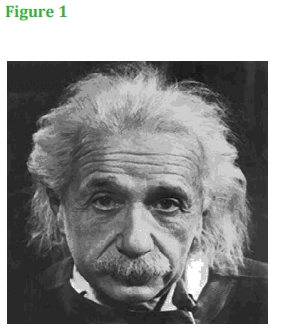
那么,这些稳定性与时间有什么关系呢?一年约为365天x 24小时x 60分钟x 60秒=31536000秒。如果维持时钟时间的振荡器具有1x10-6的精度每年(1x10-6为1ppm[百万分之一]),则时钟每年将增加(或减少)31.536秒。这使得原子上面例子中的时钟在20年的使用寿命内精确到0.006秒以内,OCXO在0.00009以内秒,TCXO振荡器在0.032秒内。
然而,大多数对计时的引用都是指“一天中的时间”,而不是数据同步特别是显示在手表或时钟上的一天中的时间。第一个石英钟由Warren Marrison建造和1927年贝尔电话实验室的J.W.Horton。首款商用腕表采用石英晶体作为计时元件是精工公司生产的35SQ Astron手表,于1969年圣诞节(图2),零售价约为1250美元(约为一辆小型汽车的价格)。这使用了8.192kHz X切割音叉晶体。
原厂代码
品牌
型号
类型
频率
电压
F535L-27
Fox Electronics
F535L
XO (Standard)
27MHz
3.3V
F535L-12
Fox Electronics
F535L
XO (Standard)
12MHz
3.3V
F535L-48
Fox Electronics
F535L
XO (Standard)
48MHz
3.3V
F535L-10
Fox Electronics
F535L
XO (Standard)
10MHz
3.3V
F535L-40
Fox Electronics
F535L
XO (Standard)
40MHz
3.3V
F316R-33.333
Fox Electronics
F310R
XO (Standard)
33.333MHz
1.8V
F216R-24.000
Fox Electronics
F210R
XO (Standard)
24MHz
1.8V
F235-12
Fox Electronics
F235
XO (Standard)
12MHz
3.3V
F235-50
Fox Electronics
F235
XO (Standard)
50MHz
3.3V
F235-24
Fox Electronics
F235
XO (Standard)
24MHz
3.3V
F335-25
Fox Electronics
F335
XO (Standard)
25MHz
3.3V
F335-50
Fox Electronics
F335
XO (Standard)
50MHz
3.3V
F335-48
Fox Electronics
F335
XO (Standard)
48MHz
3.3V
F335-12
Fox Electronics
F335
XO (Standard)
12MHz
3.3V
F335-16
Fox Electronics
F335
XO (Standard)
16MHz
3.3V
F316R-48.000
Fox Electronics
F310R
XO (Standard)
48MHz
1.8V
F535L-16
Fox Electronics
F535L
XO (Standard)
16MHz
3.3V
F316R-12.288
Fox Electronics
F310R
XO (Standard)
12.288MHz
1.8V
F316R-14.31818
Fox Electronics
F310R
XO (Standard)
14.31818MHz
1.8V
F316R-16.000
Fox Electronics
F310R
XO (Standard)
16MHz
1.8V
F316R-18.432
Fox Electronics
F310R
XO (Standard)
18.432MHz
1.8V
F316R-26.000
Fox Electronics
F310R
XO (Standard)
26MHz
1.8V
F316R-27.000
Fox Electronics
F310R
XO (Standard)
27MHz
1.8V
F316R-30.000
FOX有源晶振
F310R
XO (Standard)
30MHz
1.8V
F316R-44.000
Fox Electronics
F310R
XO (Standard)
44MHz
1.8V
F216R-16.000
Fox Electronics
F210R
XO (Standard)
16MHz
1.8V
F216R-24.576
Fox Electronics
F210R
XO (Standard)
24.576MHz
1.8V
F216R-27.000
Fox Electronics
F210R
XO (Standard)
27MHz
1.8V
F216R-40.000
Fox Electronics
F210R
XO (Standard)
40MHz
1.8V
F216R-44.000
Fox Electronics
F210R
XO (Standard)
44MHz
1.8V
F216R-48.000
Fox Electronics
F210R
XO (Standard)
48MHz
1.8V
F316R-24.576
Fox Electronics
F310R
XO (Standard)
24.576MHz
1.8V
F316R-50.000
Fox Electronics
F310R
XO (Standard)
50MHz
1.8V
F4100-400
Fox Electronics
F4100
XO (Standard)
40MHz
3.3V
F4100-500
Fox Electronics
F4100
XO (Standard)
50MHz
3.3V
F235-16
Fox Electronics
F235
XO (Standard)
16MHz
3.3V
F235-25
Fox Electronics
F235
XO (Standard)
25MHz
3.3V
F335-24
Fox Electronics
F335
XO (Standard)
24MHz
3.3V
F135-12
Fox Electronics
F135
XO (Standard)
12MHz
3.3V
F135-16
Fox Electronics
F135
XO (Standard)
16MHz
3.3V
F135-24
Fox Electronics
F135
XO (Standard)
24MHz
3.3V
F135-40
Fox Electronics
F135
XO (Standard)
40MHz
3.3V
F135-48
Fox Electronics
F135
XO (Standard)
48MHz
3.3V
F135-50
Fox Electronics
F135
XO (Standard)
50MHz
3.3V
819A-10-1
Fox Electronics
F210R
XO (Standard)
10MHz
1.8V
FOX914B-19.200
Fox Electronics
FOX914
TCXO
19.2MHz
3V
FOX914B-19.440
Fox Electronics
FOX914
TCXO
19.44MHz
3V
FOX914B-26.000
Fox Electronics
FOX914
TCXO
26MHz
3V
F316R-12.000
Fox Electronics
F310R
XO (Standard)
12MHz
1.8V
F3345R 20.0000/TR
Fox Electronics
F3345
XO (Standard)
20MHz
5V
F3355-6.0MHZ
Fox Electronics
F3355
XO (Standard)
6MHz
4.5 V ~ 5.5 V
121-6-1
Fox Electronics
F4102R
XO (Standard)
-
5V
092-80-15
Fox Electronics
F3345
XO (Standard)
80MHz
5V
840C-12-1
Fox Electronics
FOX922
VCTCXO
12MHz
3.3V
FOX465
Fox Electronics
FOX465
XO (Standard)
32.768kHz
3.3V
F254-327
Fox Electronics
F254
XO (Standard)
32.768kHz
3.3V
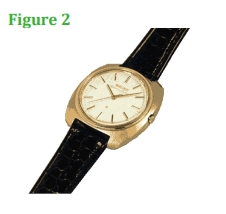
石英晶体的所有不同切割都来自同一个培养的石英棒,但切割的温度不同与结晶轴的角度(图3)。它们各自具有不同的机械和电气性能为最终应用量身定制。AT Cut用于大多数晶体振荡器,特别是适用于精密TCXO,SC切割晶体主要用于OCXO。
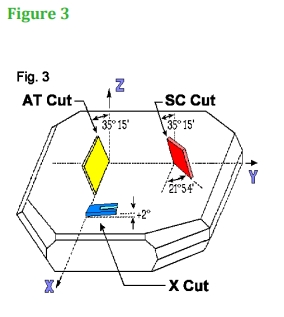
X-Cut音叉水晶(图4)用于“一天中的时间”计时应用(手表、国产时钟等),因为其固有的低频振荡、非常低的工作功率要求和低温度系数约为25°C(图5)。高精密的福克斯TCXO振荡器.
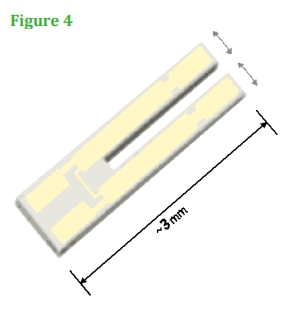
特别是,X Cut音叉晶体可以在32.768kHz下振荡,当数字分频时下降215,产生1秒的方波,非常适合计时。同样的1秒方波可以通过将16.7772116MHz AT Cut石英晶体振荡器除以224来产生,但功率会增加由于更高的频率和额外的分频器,消耗可能是X Cut的100倍以上音叉晶体选项(不适合电池供电的应用)
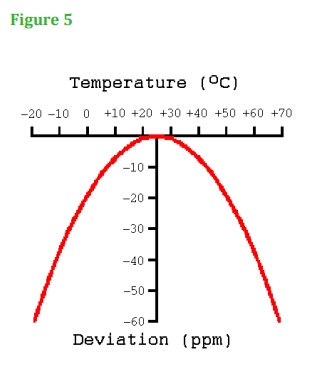
由于计时涉及计数和除法,通常选择的振荡器是Gated Pierce(如文章“IC晶体振荡器电路”),但增加了非常低的晶体驱动功率的限制以及(通常)用于电池应用的低Vdd电压。
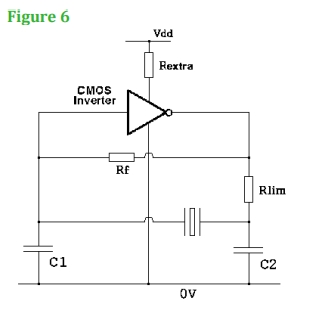
一个典型的32.768kHz X Cut音叉晶体的ESR(等效串联电阻)为30kΩ至60kΩ,要求负载电容为6pF至15pF(典型为12.5pF),第一年老化小于±3ppm,但是更重要的是具有1µW的最大晶体驱动电平。图6中的电路,使用未缓冲逆变器将在以下电路值下提供可接受的性能。C1=10pF,C2=22pF,Rlim=330kΩ,Rf=22MΩ. Rextra可用于限制开关期间非缓冲逆变器的电流47kΩ的值 Vdd=2V时,应将电流消耗限制在~5µA。
Time is more important than oscillator frequency if events must happen synchronously. The frequency and accuracy of the oscillators generating the ‘timing’ is not critical so long as they all know exactly what time it is. If, on the other hand, the oscillator generating the timing cannot synchronise itself to a reference timing source then the accuracy of the oscillators frequency generating the time is now vitally important. The internationally recognised time standard is UTC (Coordinated Universal Time) and is maintained by the National Institute of Standards and Technology, a branch of the United States Department of Commerce.
In Telecoms infrastructure the various levels of required timing accuracies are defined as Stratum levels 1 to 4. The most accurate, and hence the Primary Reference Source is Stratum 1, an atomic clock (usually a Caesium Beam or Hydrogen Maser) which maintains its frequency to an accuracy of <1x10-11 for life. The next level, Stratum 2, maintains its frequency to an accuracy of <1x10-10 per day with Stratum 3 maintaining its frequency to an accuracy of <3.7x10-7 per day. Stratum level 2 is implemented with a precision OCXO (Oven Controlled Crystal Oscillator) using a SC cut crystal. Stratum level 3 is implemented with a precision TCXO (Temperature Compensated Crystal Oscillator) using an AT cut crystal.
So how do these stabilities relate to time? One year is ~365 days x 24 hours x 60 minutes x 60 seconds = 31,536,000 seconds. If the oscillator maintaining the time of a clock had an accuracy of 1x10-6 per year (1x10-6 is 1 ppm [part per million]) then the clock would gain (or lose) 31.536 seconds per year. This makes the atomic clock in the example above accurate to within 0.006 seconds for a 20 year life, the OCXO to within 0.00009 seconds per day and the TCXO to within 0.032 seconds per day.
Most references to timekeeping, however, refer to ‘time of day’ rather than data synchronisation and in particular the time of day as displayed on a watch or clock. The first Quartz Clock was built by Warren Marrison and J.W. Horton at Bell Telephone Laboratories in 1927. The first commercially available wrist watch using a Quartz Crystal as the timing element was the 35SQ Astron Watch manufactured by Seiko and launched on Christmas Day in 1969 (Fig. 2) with a retail price of ~US$1250 (about the price of a small car). This used an 8.192kHz X cut tuning fork crystal.
All of the different cuts of Quartz Crystal come from the same cultured quartz bar but are cut at different angles to the crystallographic axis (Fig. 3). They each have different mechanical and electrical properties tailored to the final application. The AT Cut is used in the majority of crystal oscillators and is particularly suitable for precision TCXOs, with the SC Cut crystal being used primarily in OCXOs.
The X Cut tuning fork crystal (Fig. 4) is used in ‘Time of Day’ timekeeping applications (wrist watches, domestic clocks etc.) because of its natural low frequency of oscillation, very low operating power requirements and low temperature coefficient around 25o C (Fig. 5).
In particular the X Cut tuning fork crystal can be made to oscillate at 32.768kHz which, when digitally divided down by 215, generates a 1 second square wave, ideal for timekeeping. This same 1 second square wave could be generated by dividing down a 16.777216MHz AT Cut crystal oscillator by 224 but the increase in power consumption due to the higher frequency and additional dividers could be over 100 times that of the X Cut tuning fork crystal option (not ideal for battery powered applications).
As timekeeping involves counting and dividing the usual oscillator of choice is the Gated Pierce (as described in the article ‘IC CRYSTAL OSCILLATOR CIRCUITS’) but with the added constraint of very low crystal drive power and (usually) low Vdd voltage for battery applications.
A typical 32.768kHz X Cut tuning fork crystal will have an ESR (Equivalent Series Resistance) of 30k? to 60k?, require a load capacitance of 6pF to 15pF (12.5pF being typical), have 1st year ageing of less than ±3ppm, but more importantly have a maximum crystal drive level of 1µW. The circuit in Fig.6, using an Un-Buffered Inverter, will give acceptable performance with the following circuit values. C1=10pF, C2=22pF, Rlim=330k?, and Rf=22M?. Rextra can be used to limit the current drawn by the Un-Buffered Inverter during switching, a value of 47k? with Vdd=2V should limit the current consumption to ~5µA.








